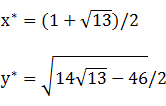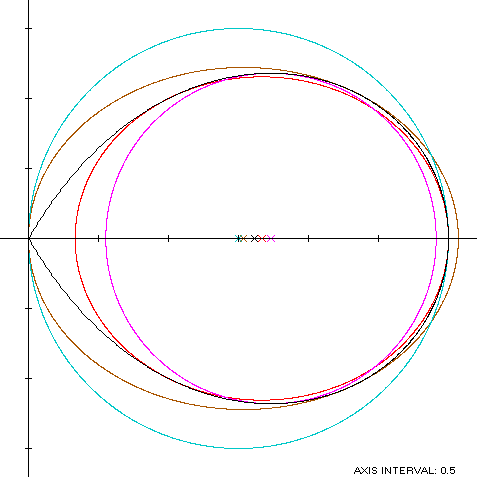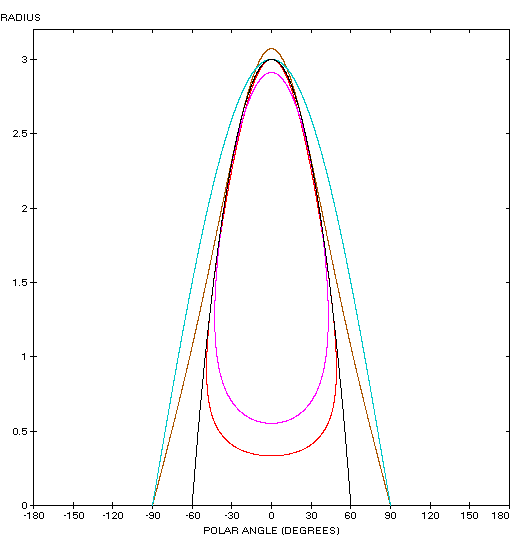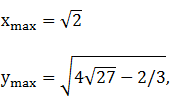Balmoral Software

Balmoral Software

r(t) = 4 cos(t) - sec(t), -π/3 ≤ t < π/3The curve follows a counterclockwise path as t increases, starting from the cusp at the origin when
so the width x height of its bounding rectangle is
and its perimeter is 8.244653. By (C2), its centroid abscissa is
and center abscissa
 The
candidate circle must be contained within S, so we require that
The
candidate circle must be contained within S, so we require that
d/dt [x(t) - z]y(t) = d/dt -4sin2(t)tan(t)[2cos(2t) + 1]has a zero at t* = π/4. The corresponding coordinates are (x*,y*) = (1,1). We then have
For verification,
d/dt [x(t) - z]y(t) = d/dt [4cos(t) - sec(t)]2cos(t)sin(t)has a zero at
The corresponding coordinates are
We then have
For verification,
Figure Parameters Perimeter Area Centroid Incircle R = 7.413905 4.374055 (1.732051,0) Inellipse 7.826465 4.836799 (1.666667,0) Trisectrix 8.244653 5.196152 (1.612266,0) Circumellipse 8.689052 5.892208 (1.535184,0) Circumcircle R = 3/2 9.424778 7.068584 (1.5,0)


The Trisectrix of Maclaurin (red) is a member of a group of similarly-shaped figures described on these pages, including (inside to outside) the teardrop curve, the Tschirnhausen cubic, the right strophoid and the piriform curve:
is rotated clockwise by π/4, producing the new x-symmetric polar function
Over the lobe domain -π/4 ≤ t < π/4, the maximum abscissa and ordinate of the rotated Folium are
so to scale the Folium to the comparable coordinate extrema of the trisectrix, we multiply its abscissas by 3/xmax and its ordinates by
 producing the coordinate
functions
producing the coordinate
functions
These coordinate functions cannot be directly compared with the corresponding ones for the trisectrix since the rates of travel along the path (if t is considered a time variable) vary between the two curves, and the domains for t are different. However, the path itself is the same for both curves since the preceding x(t), y(t) satisfy the cartesian form of the trisectrix:
2x(x2 + y2) = 2(3x2 - y2)
Copyright © 2021 Balmoral Software (http://www.balmoralsoftware.com). All rights reserved.